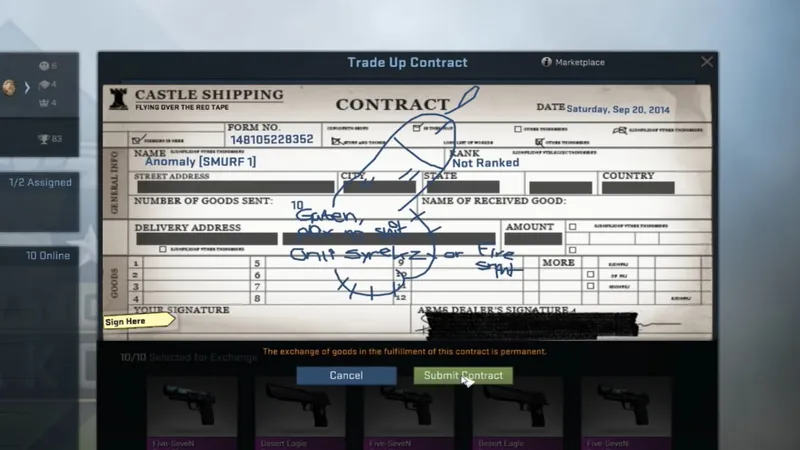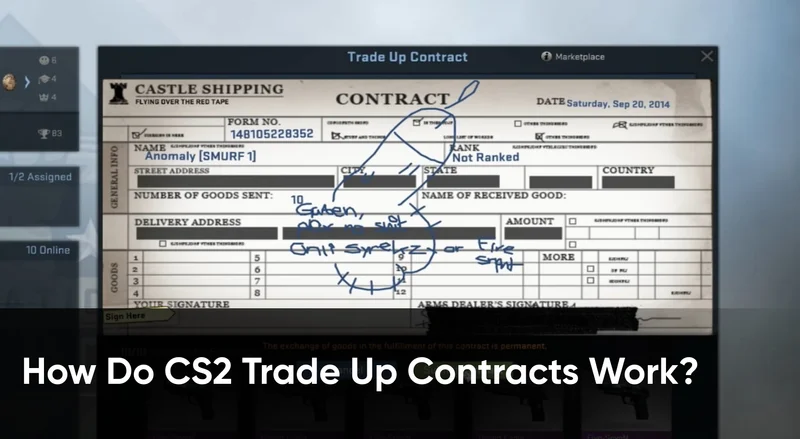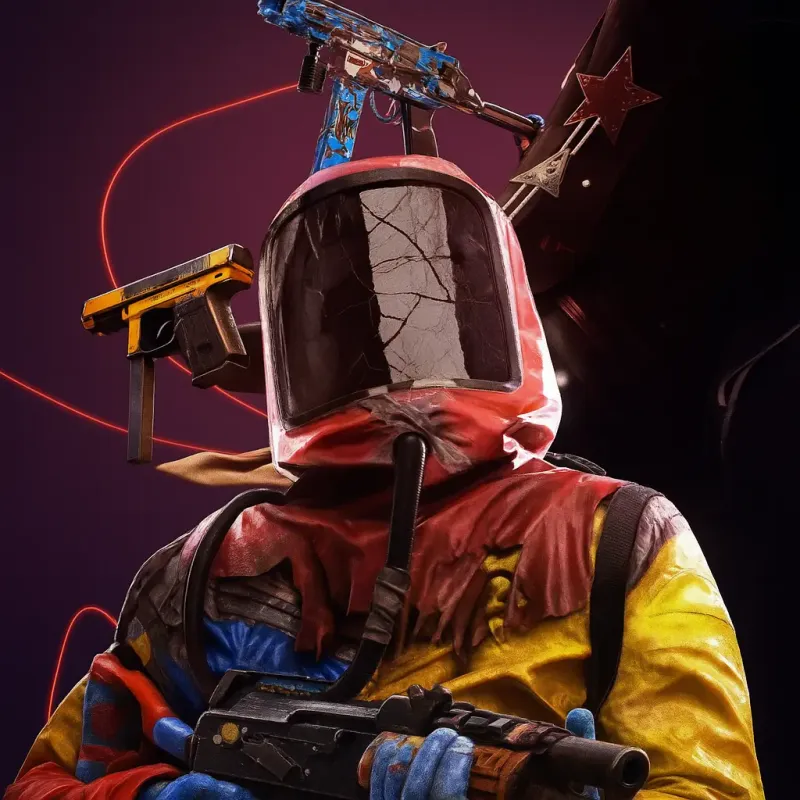Sick of seeing the same old skins in your CS2 inventory? Whether you’re hoping for a flashy upgrade or just want to try your luck, Trade Up Contracts in CS2 can offer an exciting way to transform your skins into something more valuable. However, navigating the world of Trade Up Contracts can be tricky—this guide is here to simplify the process and help you make informed choices.

A Closer Look at CS2 Trade Up Contracts
Trade Up Contracts allow players to exchange 10 skins of the same quality level for a higher-tier skin. The catch? While there’s no surefire way to guarantee a high-value outcome, smart strategies and a good understanding of the system can boost your chances.
Let’s walk through the key components of how CS2 Trade Ups function and explore the best methods to maximize your rewards.
The Mechanics Behind Trade Up Contracts
At its core, the Trade Up system is straightforward: gather 10 lower-tier skins and use them in a contract to receive one skin of a higher tier. The skin you receive comes from one of the collections associated with the skins you traded, and factors like the skins’ conditions and float values play a significant role in the final outcome.
While some players rely on pure luck, the more savvy traders take time to understand how these factors influence their potential results.
Steps to Complete a Trade Up Contract
Gather Your Skins: Collect 10 skins from the same grade, whether it’s Mil-Spec, Restricted, or Classified. The skins can come from different collections, but all must be of the same rarity.
Initiate the Trade: Select the skins you want to trade up, and submit them into the Trade Up Contract. This will bring up a screen where you sign the contract, confirming the exchange.
Receive Your New Skin: After signing, a skin of a higher tier will be randomly generated based on the collections of the skins you traded. It could be a rare gem—or a common skin of similar value to what you traded.
Maximizing Your Gains in CS2 Trade Ups
When it comes to making profitable Trade Ups, it’s all about balancing the risk and reward. Understanding market dynamics, float values, and timing can turn an ordinary trade into a valuable outcome.
1. Study the Market Trends
Skin prices fluctuate based on popularity, rarity, and events in the CS2 community. Keeping a close eye on these trends allows you to identify good opportunities for trade-ups and avoid unfavorable exchanges.
2. The Importance of Float Values
Float values, which measure the wear and tear of a skin, directly affect its market value. Lower floats mean better conditions, which in turn result in higher-value skins when trading up. Make sure to calculate your average float when submitting skins in Trade Up Contracts.
3. Finding the Right Mix of Skins
A successful Trade Up often requires a mix of skins from various collections, giving you a shot at more expensive outcomes. By blending less expensive skins from different collections, you can lower your upfront costs while increasing your potential payout.
Limitations and What to Avoid
Not every skin is eligible for Trade Up Contracts. Skins classified as Consumer Grade, knives, souvenirs, and contraband cannot be used. Additionally, StatTrak and non-StatTrak skins cannot be combined within the same contract.
Another key factor to keep in mind is float restrictions—understanding how floats affect your outcomes is critical to ensuring you get the highest-quality skins possible.
Trade Up Calculators
Trade up calculators allow you to input the skins you want to trade and preview potential outcomes. These tools analyze the float values and collection mix to provide an estimate of what your Trade Up might yield. While luck is still involved, using calculators can give you a better idea of what to expect.
Final Thoughts
Trade Up Contracts offer an exciting way to upgrade your skins in CS2, but they require careful planning and a bit of luck. By understanding market trends, optimizing float values, and using the right tools, you can increase your chances of getting a skin that’s both rare and valuable.

